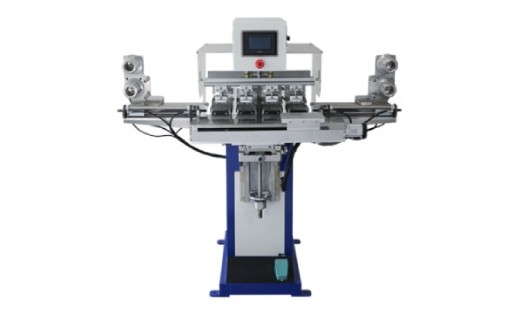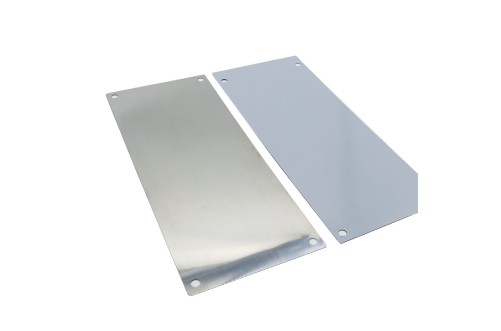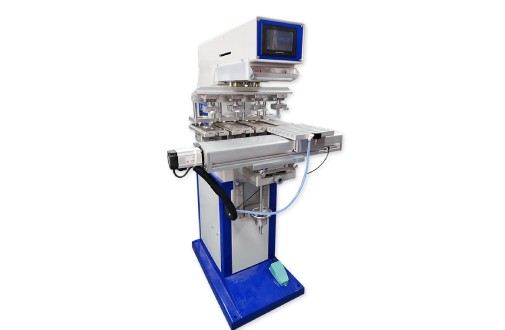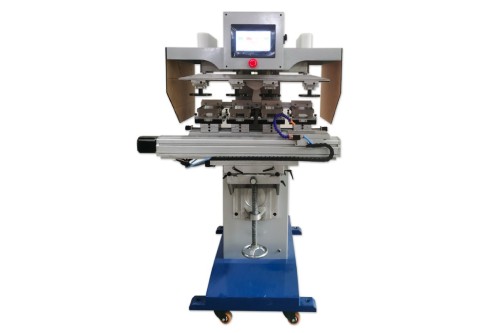Introduction
In the printing world, two-color pad printing machines have gained popularity due to their versatility and ability to produce vibrant, multi-color prints. However, it is crucial to use ink formulations compatible with these machines to achieve optimal results. This article aims to provide valuable insights into the properties ink formulations should possess to ensure compatibility with two-color pad printing machines. Whether you are a manufacturer, supplier, or potential buyer of such devices, understanding the critical considerations for ink compatibility will help you make informed decisions.
Overview of Two-Color Pad Printing Machines
Before delving into ink formulation requirements, one must grasp the fundamentals of two-color pad printing machines. These machines utilize a unique process that involves transferring ink from a plate (cliché) to a silicone pad, which then transfers the ink onto the desired substrate. This technology allows for precise, high-quality printing on various surfaces, making it popular in promotional product manufacturing, electronics, and automotive industries.
Ink Formulation Requirements for Two-Color Pad Printing Machines
Fast Drying Time
One crucial property of ink formulations for two-color pad printing machines is fast drying time. Efficient printing requires quick ink drying to ensure accurate registration and prevent smudging. Factors such as ink composition, solvent selection, and environmental conditions influence the drying time. Ink manufacturers and suppliers should provide fast-drying ink options for two-color pad printing machines.
Excellent Adhesion Properties
Achieving strong adhesion between the ink and the substrate is vital for print quality and durability. Ink formulations should possess excellent adhesion properties to ensure long-lasting prints withstand various conditions. Surface preparation, substrate compatibility, and ink chemistry are critical in achieving optimal adhesion. Manufacturers and suppliers should offer ink formulations with tested and proven adhesion capabilities.
Compatibility with Different Substrates
Two-color pad printing machines are compatible with many substrates, including plastics, metals, glass, and ceramics. Ink formulations must be tailored to the specific characteristics of each substrate to ensure proper ink transfer, adhesion, and durability. Ink manufacturers should provide a comprehensive range of ink options suitable for different substrates, helping users achieve desired results regardless of the material they are printing on.
Color Accuracy and Consistency
Reproducing accurate and consistent colors is essential in two-color pad printing. Ink formulations should be carefully formulated to achieve precise color matching and consistency throughout printing. Factors like pigment selection, ink mixing techniques, and color calibration tools contribute to color accuracy and consistency. Ink suppliers should offer color-matching services and provide detailed instructions for achieving desired color outcomes.
Resistance to Environmental Factors
Printed materials often face environmental challenges, including UV exposure, chemicals, and physical abrasion. Ink formulations for two-color pad printing machines should resist fading, chemical reactions, and abrasion. UV-resistant inks, chemical-resistant additives, and proper curing methods are some of the approaches to enhance ink durability. Manufacturers and suppliers should provide ink formulations that meet industry standards for environmental resistance.
Viscosity and Rheological Properties
The viscosity and rheological properties of ink formulations significantly impact the print quality and transfer efficiency of two-color pad printing. Proper viscosity allows smooth ink flow, preventing bleeding or poor ink transfer. Ink manufacturers should offer inks with optimal thickness for two-color pad printing machines and provide guidelines on adjusting viscosity if needed. Rheological modifiers can also tailor ink flow properties based on specific printing requirements.
Testing and Evaluation of Ink Formulations
To ensure the compatibility of ink formulations with two-color pad printing machines, rigorous testing and evaluation are necessary. Ink manufacturers and suppliers should conduct comprehensive tests to assess ink properties and performance. Some recommended testing methods and equipment include:
- Ink Adhesion Test: This test measures the ink’s adhesion strength on different substrates. Various adhesion testing methods, such as tape or cross-cut adhesion tests, can be employed to evaluate ink-substrate bonding.
- Color Matching and Consistency Evaluation: Color measurement devices, such as spectrophotometers or colorimeters, can be used to analyze the accuracy and consistency of ink colors. Comparative analysis against color standards or Pantone matching systems ensures the desired color outcomes.
- Drying Time Assessment: Testing the ink’s drying time under controlled conditions helps determine its suitability for two-color pad printing machines. Test prints can be inspected at specific intervals to assess the ink’s drying speed and smudge resistance.
- Durability and Environmental Resistance Testing: Ink formulations should undergo tests to evaluate their resistance to UV exposure, chemical exposure, and physical abrasion. Accelerated aging tests or exposure to harsh conditions can provide insights into ink durability.
Interpreting the test results allows ink manufacturers and suppliers to make necessary adjustments to their formulations, ensuring optimal compatibility with two-color pad printing machines.
Conclusion
Choosing ink formulations compatible with two-color pad printing machines is essential to achieve high-quality, vibrant prints with excellent adhesion and durability. Fast drying time, adhesion properties, compatibility with different substrates, color accuracy and consistency, resistance to environmental factors, and appropriate viscosity are critical considerations for ink formulation.
Manufacturers and suppliers of two-color pad printing machines should collaborate with ink manufacturers to develop ink formulations that meet the specific requirements of their devices and offer reliable, tested ink options. It is recommended that potential buyers of two-color pad printing machines consult with experts or professionals in the field to ensure the ink formulations they choose are compatible with their specific printing needs.
By understanding and addressing the properties ink formulations should possess for compatibility with two-color pad printing machines, users can achieve optimal printing results, enhance productivity, and create visually appealing prints for various applications.







